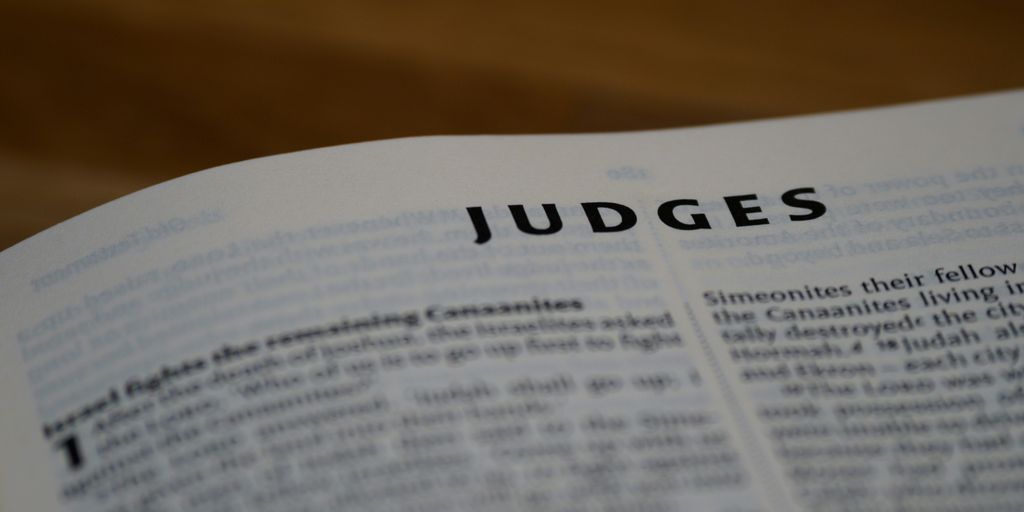The way justice works is changing. Artificial intelligence, or AI, is popping up in courtrooms more and more. This isn’t just about robots on the bench, though. It’s about using smart computer programs to help with legal stuff. But, like with any new tool, there are things we need to think about. We’ve got to make sure AI in court is fair, clear, and actually helps people, instead of making things harder. This article will look at how we can make sure AI works for justice, not against it.
Key Takeaways
- AI in court needs careful handling to avoid biases in its data and decisions. We have to check it often.
- It’s important to know how AI in court makes its choices. People need to understand the reasons behind what the AI says.
- Humans still need to be in charge. AI in court can help, but judges and lawyers should make the final calls.
- AI in court can make legal help cheaper and easier to get for more people, especially for simple tasks.
- We need clear rules for how AI in court is used, making sure it’s fair and keeps personal information safe.
Navigating the Ethical Landscape of AI in Legal Decision-Making
It’s no secret that AI is making waves, and the legal world is no exception. But before we jump headfirst into an AI-powered courtroom, we need to pump the brakes and think about the ethics of it all. It’s not just about efficiency; it’s about fairness, justice, and making sure we don’t accidentally create a system that’s even more biased than the one we’re trying to fix. The integration of AI in legal decision-making demands careful consideration of its ethical implications.
Understanding Data Biases in AI in Court
AI learns from data, plain and simple. If the data is skewed, the AI will be too. Think about it: if the data used to train an AI on criminal sentencing is primarily from one demographic, the AI might unfairly penalize people from that group. It’s like teaching a kid only one side of a story – they’re going to have a pretty warped view of things. We need to be super careful about the data we feed these systems. Thorough audits of data used in AI training are important to identify and correct any biases.
Ensuring Transparency and Explainability in AI in Court
Imagine a judge making a decision based on something they can’t explain. Sounds crazy, right? Well, that’s what it’s like if we don’t demand transparency from AI. We need to know why an AI made a certain recommendation. Was it based on solid evidence, or some weird correlation it found in the data? Black box algorithms are a no-go. Legal professionals should be able to understand the reasoning behind an AI’s output to ensure accountability and trust.
Regular Audits and Updates for AI in Court Algorithms
Bias isn’t a one-time thing. It can creep in over time as data changes and society evolves. That’s why we need to constantly check and update AI algorithms used in court. Think of it like a car – you can’t just drive it forever without maintenance. Regular audits and updates to algorithms are important to mitigate new or evolving biases, and to reflect changes in law and society.
Blending AI in Court with Human Expertise
AI should be a tool, not a replacement. It can help with research, data analysis, and even predicting outcomes, but it shouldn’t be making the final calls. Judges and lawyers need to be able to review the AI’s recommendations, use their own judgment, and consider the human element of each case. Always ensure that AI-driven insights are reviewed and validated by human performance evaluations. It’s about finding the right balance between technology and human wisdom.
Addressing Bias and Ensuring Fairness with AI in Court
AI’s potential in the legal system is huge, but we can’t ignore the risks of bias creeping in. If AI systems are trained on biased data, they’re likely to perpetuate unfair outcomes. It’s like teaching a robot to be prejudiced – not a good look for justice. We need to be proactive about identifying and fixing these biases to make sure AI helps, not hurts, fairness in the courts.
Identifying and Mitigating Algorithmic Bias in AI in Court
Algorithmic bias can sneak into AI systems in a bunch of ways. Sometimes it’s in the data itself – historical records might reflect past discrimination. Other times, it’s in how the algorithm is designed. The key is to actively look for these biases and take steps to reduce them. This might mean cleaning up the data, tweaking the algorithm, or even using different algorithms altogether. Think of it like debugging code, but instead of fixing a software bug, you’re fixing a fairness bug. Continuous monitoring and mitigation of bias are crucial.
The Importance of Diverse Training Data for AI in Court
Imagine training an AI to recognize faces, but only showing it pictures of people with light skin. It’s going to have a hard time accurately identifying people with darker skin tones. The same goes for legal AI. If the training data isn’t diverse – if it doesn’t include a wide range of demographics, case types, and legal outcomes – the AI is likely to make biased decisions. It’s like trying to bake a cake with only half the ingredients – it’s just not going to turn out right. Diverse data helps the AI learn to see the whole picture and make fairer assessments. Here’s a simple table to illustrate the point:
| Data Category | Example | Impact of Lack of Diversity |
|---|---|---|
| Demographics | Race, gender, socioeconomic status | Biased risk assessments |
| Case Types | Drug offenses, property crimes, violent crimes | Skewed predictions about recidivism |
| Legal Outcomes | Convictions, acquittals, plea bargains | Inaccurate sentencing recommendations |
Continuous Monitoring for Impartiality in AI in Court Systems
Even if you start with a seemingly unbiased AI system, biases can creep in over time. The world changes, laws change, and the data the AI is processing changes. That’s why continuous monitoring is so important. It’s like checking the alignment on your car – you need to do it regularly to make sure you’re still headed in the right direction. This monitoring should involve:
- Regular audits of the AI’s decisions.
- Comparing the AI’s outcomes across different demographic groups.
- Seeking feedback from legal professionals and the public.
- Adjusting the AI’s algorithms as needed to maintain impartiality. We need to ensure fairness in AI operations.
The Role of Human Oversight in AI in Court
AI is making its way into the courtroom, and while it promises efficiency and maybe even a bit more fairness, it’s not ready to run the show on its own. We need to talk about how humans fit into this picture. It’s not about replacing people with machines; it’s about finding the right balance.
Maintaining Human Decision-Making Authority with AI in Court
AI can help with recommendations, but the final call needs to stay with judges and lawyers. Think of AI as a super-powered assistant, not the boss. It can sort through mountains of data, highlight patterns, and even predict outcomes, but it can’t replace human judgment. We need that human touch to consider the nuances of each case, the emotional context, and the ethical implications that algorithms might miss. This ensures that justice isn’t just about cold, hard data, but also about empathy and understanding. It’s about making sure AI recommendations are always viewed through a human lens.
Ethical Considerations for Human-AI Collaboration in Court
Working with AI in court brings up some tricky ethical questions. How do we make sure AI isn’t reinforcing existing biases? How do we ensure transparency when an algorithm makes a decision? It’s not enough to just say, "The AI said so." We need to understand why the AI made that recommendation. This means developing clear guidelines for how humans and AI should work together. It also means training legal professionals to understand the limitations of AI and to critically evaluate its output. It’s a new skill set, but it’s a must-have for the future of law. We need to think about algorithmic bias and how to mitigate it.
Ensuring Accountability in AI in Court Outcomes
If an AI makes a mistake in court, who’s responsible? Is it the programmer? The judge who used the AI’s recommendation? The defendant? This is a tough question, and we don’t have all the answers yet. But one thing is clear: we need to establish clear lines of accountability. This might mean creating new legal frameworks or adapting existing ones. It also means developing ways to audit AI systems and track their performance. We need to be able to identify errors, correct biases, and hold someone accountable when things go wrong. It’s about making sure that AI in court is used responsibly and ethically.
Improving Access to Justice with AI in Court

AI has the potential to really shake things up in the legal world, especially when it comes to making justice more accessible. For a lot of people, the legal system feels like it’s behind a huge wall of costs and complicated procedures. AI could help tear down some of that wall.
Automating Routine Legal Tasks with AI in Court
AI can take over a lot of the boring, repetitive stuff that lawyers and paralegals spend hours on. Think about things like document review, basic legal research, and filling out standard forms. By automating these routine tasks, AI frees up legal professionals to focus on more complex and strategic work. This not only speeds things up but can also help reduce errors. It’s like having a super-efficient assistant that never gets tired. For example, drafting legal pleadings can be streamlined, saving time and money.
Reducing Costs of Legal Services with AI in Court
Legal services are expensive, plain and simple. One of the biggest barriers to justice is the cost. AI can help bring those costs down in a few ways. By automating tasks, as mentioned above, AI reduces the amount of billable hours needed for a case. AI tools can also help people navigate the legal system on their own, without needing to hire a lawyer for every little thing. This is especially helpful for simple cases or for people who just need some basic information. Imagine a world where getting legal help doesn’t require emptying your bank account. That’s the promise of AI.
Providing Preliminary Legal Advice through AI in Court
Chatbots and AI-powered platforms can provide basic legal information and guidance to people who might not otherwise have access to it. These tools can answer common questions, explain legal concepts in plain language, and help people understand their rights and options. It’s like having a 24/7 legal assistant available at your fingertips. While AI can’t replace a lawyer, it can be a great starting point for people who need legal help but don’t know where to turn. It can also help people determine if they even need a lawyer in the first place, saving them time and money. It’s about making legal information more accessible and empowering people to take control of their legal situations.
Establishing Responsible AI in Court Adoption
Okay, so we’re talking about getting AI into the courts responsibly. It’s not just about throwing tech at the problem; it’s about doing it right. We need to think about policy, fairness, and keeping people’s info safe. It’s a big deal, and if we mess it up, it could really hurt the justice system. I think the most important thing is to make sure AI helps, not hurts, people seeking justice.
Developing AI Policy and Governance in Court Settings
First off, courts need rules. Like, actual written-down policies about how AI is used. Who gets to decide what AI does? How do we check if it’s working right? What happens if it screws up? These are all questions that need answers before we start letting AI make decisions. It’s about setting up a framework so everyone knows what’s going on and why. The Conference of State Court Administrators (COSCA) policy paper explores how generative AI can be integrated into court operations while ensuring fairness, transparency, and privacy. This paper outlines key opportunities, risks, and recommendations for courts navigating AI-driven transformation.
Ensuring Fairness and Transparency in AI in Court Operations
Fairness is huge. AI can be biased if it’s trained on biased data. So, we need to make sure the data is good and that the algorithms aren’t discriminating against anyone. And transparency? People need to know how the AI is making decisions. It can’t be a black box. If a judge uses AI to help decide a case, the parties involved should be able to see how the AI came to its conclusion. This builds trust and makes sure everyone is treated fairly. Here’s a quick look at some key considerations:
- Data quality checks
- Bias detection methods
- Explainable AI (XAI) implementation
Protecting Privacy in AI-Driven Court Transformations
Privacy is non-negotiable. Courts deal with super sensitive information. If AI is involved, we need to make sure that data is protected. That means strong security measures, clear rules about who can access the data, and ways to prevent data breaches. We also need to think about things like data anonymization and encryption. It’s about balancing the benefits of AI with the need to protect people’s privacy. Strict privacy laws are a must.
The Future of Judges and Court Professionals with AI in Court
AI is changing things fast, and that includes the courts. It’s not about robots replacing judges, but more about how AI can help them do their jobs better. This means judges and other court staff need to get comfortable with AI and understand what it can do.
Developing AI Expertise for Court Personnel
It’s not enough to just have AI tools; court staff need to know how to use them. This means training programs and resources to help judges, clerks, and other professionals understand AI’s capabilities and limitations. Think of it like learning a new software program – there’s a learning curve, but it can make things way easier in the long run. For example, understanding how AI algorithms work can help court personnel better interpret AI-generated documents and data.
Maintaining Public Trust with AI in Court Integration
People need to trust that AI is being used fairly and responsibly in the courts. If people think AI is biased or unfair, they won’t trust the legal system. This means being open about how AI is used, explaining the decisions AI helps make, and making sure there are ways to correct errors. It’s all about transparency and accountability. Here’s a simple breakdown:
- Transparency: Clearly explain how AI is used in court processes.
- Accountability: Establish mechanisms to address errors or biases in AI systems.
- Education: Inform the public about the benefits and limitations of AI in the legal system.
Adapting to AI-Enhanced Court Administration
AI can change how courts work, from managing schedules to processing documents. Court staff need to be ready to adapt to these changes. This might mean learning new skills, changing job roles, or finding new ways to work with technology. It’s about embracing the possibilities of AI to make the courts more efficient and accessible. AI tools can improve court administration by streamlining case processing and document review, but human oversight is critical.
Transparency and Privacy in AI in Court
It’s easy to get caught up in the excitement around AI, but we can’t forget about the basics: transparency and privacy. How do we make sure AI in the courtroom is fair and doesn’t violate anyone’s rights? It’s a big question, and we need some solid answers.
Establishing Standards for AI-Generated Documents in Court
Imagine a world where AI writes legal documents. Sounds efficient, right? But what happens when those documents contain errors or are misleading? We need clear rules. These rules should cover things like accuracy, disclosure of AI involvement, and how to challenge AI-generated content. Think of it like labeling food – people need to know what they’re consuming. It’s the same with legal documents; people need to know if AI was involved and how to verify the information. This is key to responsible AI.
Guidelines for Chatbots and Automated Decisions in Court
Chatbots are becoming more common, even in legal settings. They can answer basic questions, schedule appointments, and provide information. But what happens when a chatbot gives bad advice? Or makes a decision that affects someone’s case? We need guidelines for how these chatbots operate. These guidelines should address:
- Transparency: Users should always know they’re interacting with a chatbot, not a human.
- Accuracy: Chatbots should provide correct and up-to-date information.
- Limitations: Chatbots should clearly state what they can and cannot do.
- Escalation: There should be a clear process for escalating complex issues to a human.
Protecting Sensitive Information with AI in Court
Courts handle a lot of sensitive information: personal details, financial records, medical histories. If AI is involved, we need to make sure that information is protected. This means:
- Data encryption: All data should be encrypted, both in transit and at rest.
- Access controls: Only authorized personnel should have access to sensitive information.
- Data minimization: AI systems should only collect the data they need, and nothing more.
- Regular security audits: Systems should be regularly audited to identify and fix vulnerabilities.
It’s a lot to think about, but getting this right is crucial for maintaining trust in the legal system. We need to balance the benefits of AI with the need to protect people’s rights and privacy. It’s not easy, but it’s worth it.
The Path Ahead for AI in Justice
So, where does all this leave us? AI in court is a big deal, and it’s not going away. We’ve got to be smart about how we use it. It’s about making sure these tools actually help people, not cause more problems. That means keeping an eye on things, making sure the AI is fair, and always having humans in charge. If we do that, AI can really make things better for everyone involved in the justice system. It’s a journey, for sure, but one we can figure out together.
Frequently Asked Questions
How can we make sure AI in courts doesn’t carry over old unfairness?
AI learns from old information. If that information has unfairness in it, the AI will also be unfair. We need to check the information used to teach AI very carefully and fix any unfair parts.
Why is it important for AI to explain its decisions in court?
We need to make sure AI can show how it got its answers. People in law should be able to understand why the AI made a certain choice. This helps everyone trust the AI and makes sure someone is responsible.
Is dealing with AI unfairness a one-time fix?
No, it’s a constant job. We need to check and update the AI programs often. This helps catch new unfairness and keeps the AI up-to-date with new laws and changes in society.
Will human judges still be needed if AI is used in courts?
AI can help with many tasks, but tough decisions and moral questions in complex cases still need human judges. People will likely always be needed.
How can AI help more people get legal help?
AI can do simple legal jobs automatically, make legal help cheaper, and give basic legal advice. This can make legal services available to more people, especially those who don’t usually get them.
What are the key moral things to think about when using AI in legal cases?
Being open, responsible, fair, and avoiding unfairness are the main moral points. This makes sure AI helps justice instead of hurting it.














